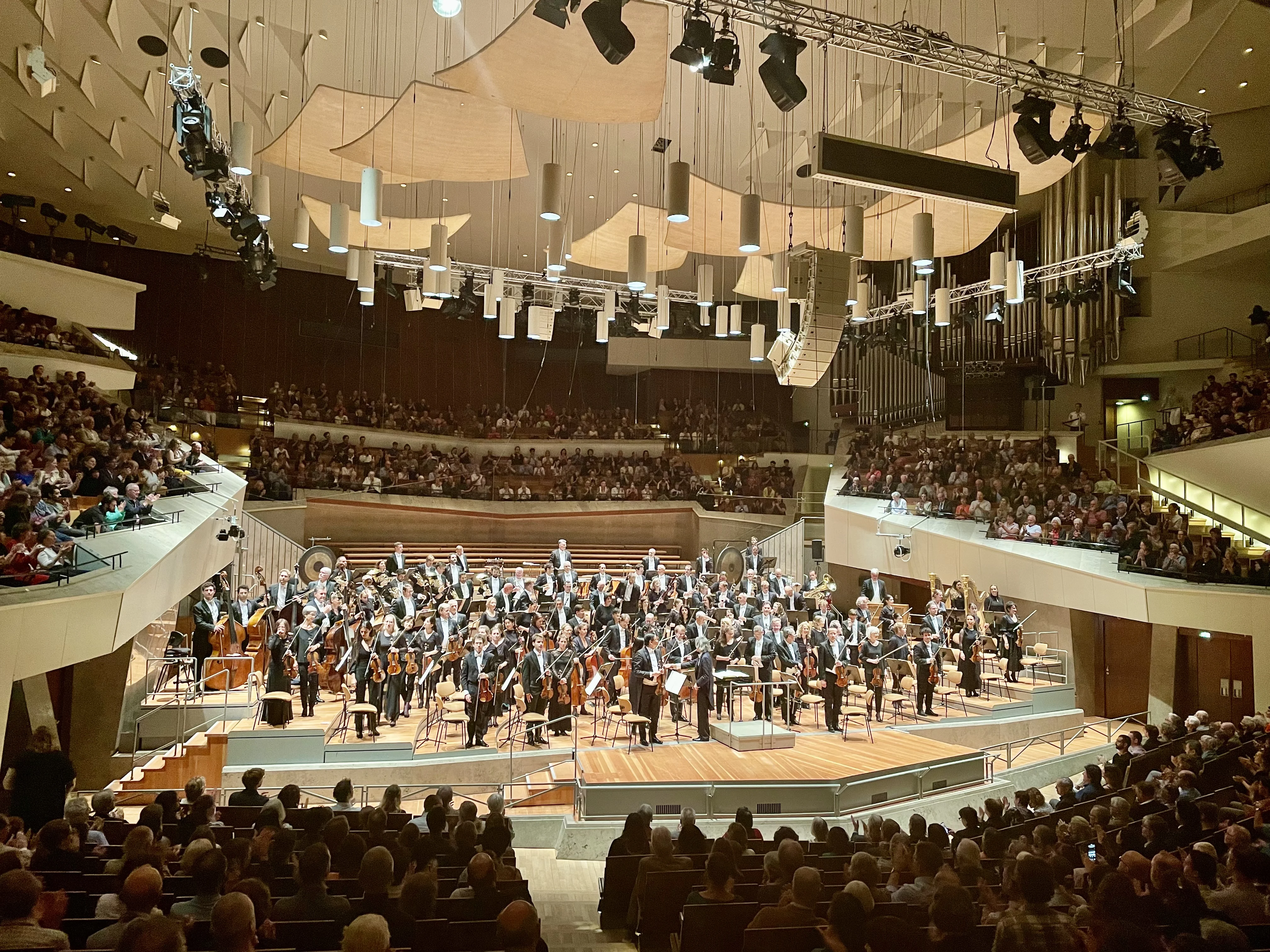
05/10/2025
Philharmonic halls and concert halls worldwide
Architecture, acoustics and special auditoriums
For me, a concert rarely begins with the first note. It starts earlier, when I enter the hall, when I look at the wooden walls or glass façade, when I hear the rustling of the programmes. For me, philharmonic halls are more than just venues. They function as precisely constructed spaces for music, designed for sound, acoustics and atmosphere.
For me as a Berliner, this feeling, this connection between music and place, is shaped by the Philharmonie. Built by architect Hans Scharoun in 1963, my childhood, youth and adulthood have been shaped by this building in the Kulturforum am Tiergarten. Oh, what concerts I have experienced there and what music I have celebrated.
Philharmonie – a beautiful play on words
The word ‘Philharmonie’ comes from Greek: phílos, love, friendship, and harmonía, harmony. When you enter a philharmonic hall, you become part of a community that appreciates music. The name has a unifying effect and invites you not only to listen to music, but to consciously experience it.
What makes a philharmonic hall special
Each one sounds different. Some halls let the music float, others bring you right up close. What they all have in common is that special pause: the murmuring before the concert, the expectant silence as the lights slowly dim, the moment when the world briefly stands still... Only to then awaken fresh and loud or gentle and mystical: the concert begins.
The great icons and the unknown gems
Not so long ago, I heard Beethoven at the Berlin Philharmonic. When the last note faded away, there was a silence in the hall that was almost physically palpable.
In Hamburg, in the Elbphilharmonie, this striking building, like a glass ship towering over the old quay warehouse. I was there once when rain pattered on the glass façade outside as I arrived, and Mahler's music resounded inside, as if the city and the music were communicating with each other.
And in Paris, on the roof of the Philharmonie de Paris, fog lay over the city as a cello began to play inside.
Even away from the big names, there are some special music venues:
In Neubrandenburg stands St. Mary's Concert Church. From the outside, it is a Gothic brick church, but inside it is a modern concert hall, built like a house within a house. Gothic walls meet modern sounds, history resonating.
The Rudolf Oetker Hall in Bielefeld surprises with its clear, intimate acoustics, almost like a living room concert.
And in Szczecin, the bright gables of the Philharmonic Hall look almost like cut-out paper from the outside. Inside, wide foyers open up, then the large hall with warm wood and clear lines. At a concert there, I was surprised. I sat a little higher up on the side, had a view of the stage and the audience, and felt close to the musicians. After the concert, this feeling lingered for a moment on the steps in front of the building, as if a piece of it had been carried outside.
Experience music, feel cities
That's exactly what our trips are all about: not just hearing music, but feeling it.
Start your concert evening in Hamburg with an aperitif at the harbour. Stroll through Berlin's Tiergarten park before heading to the Philharmonie. Or stand on a rooftop in Paris before the first notes ring out inside.
Philharmonic halls are more than just buildings. They are places where music, cities and people resonate with one another.
If these concert halls appeal to you as much as they do to me, then take a look at our other trips. The Elbphilharmonie awaits you in Hamburg. Click here for Hamburg – Elbphilharmonie concert trip. Or you could go a step further: Music trip to Japan: Tokyo, Osaka, Matsumoto. And for an urban vibe, I recommend the music trip to Hong Kong.



